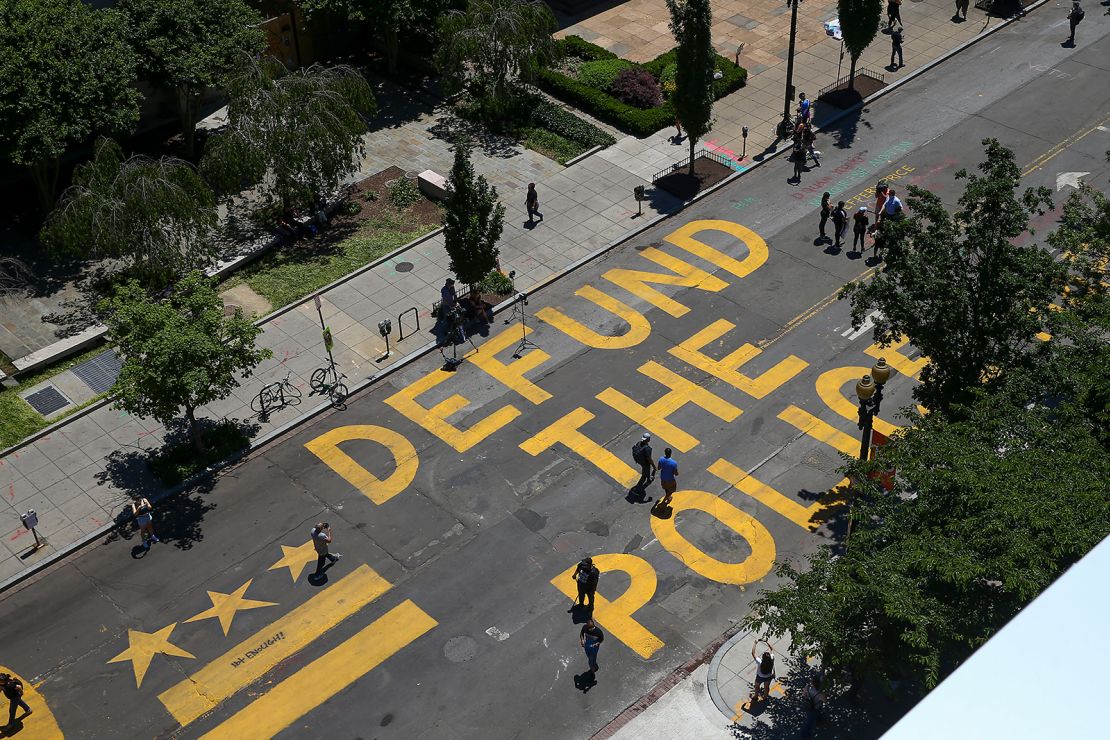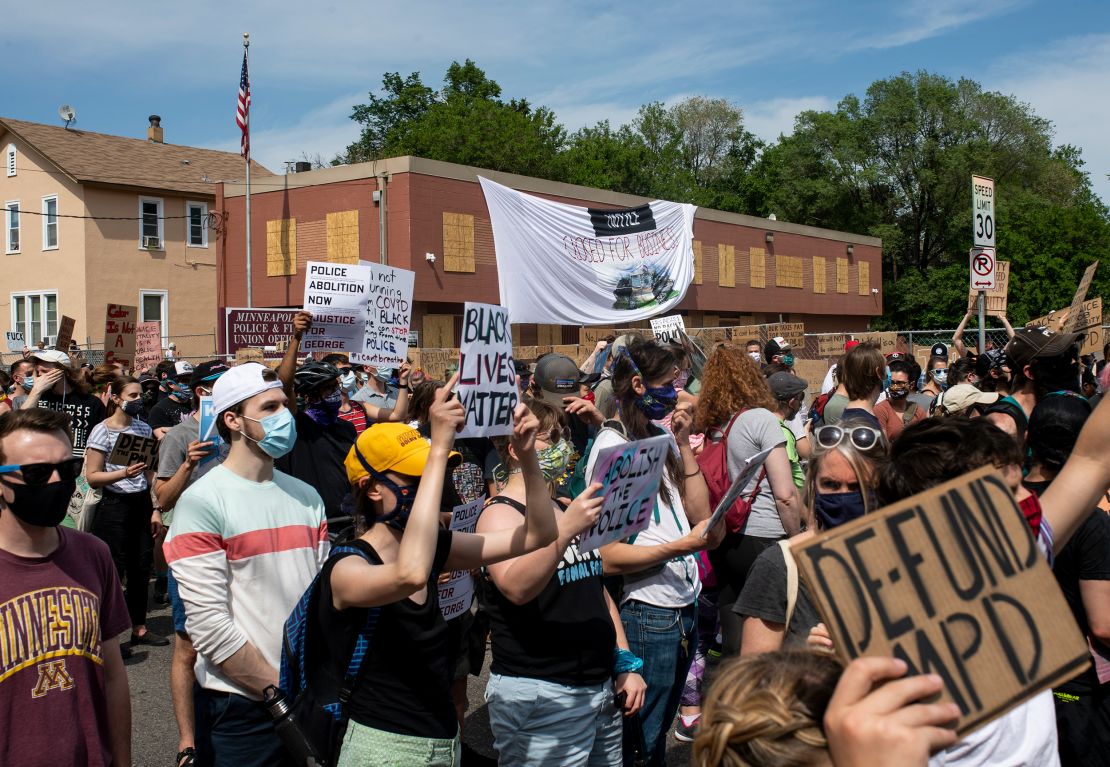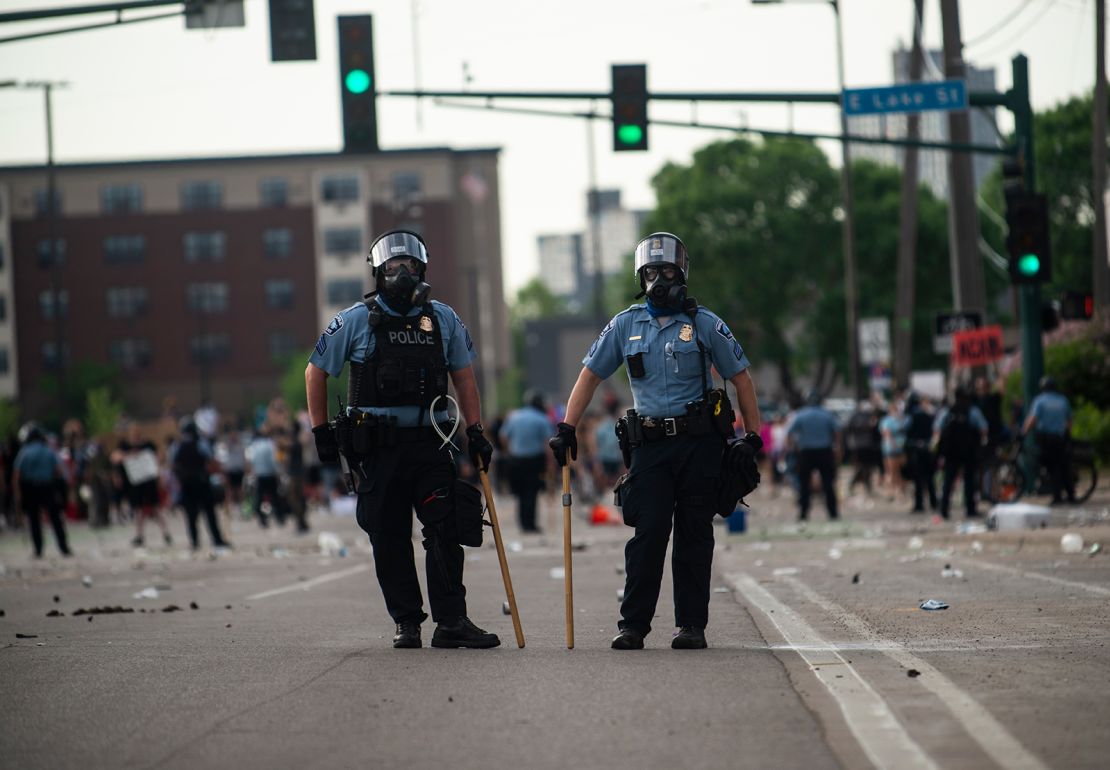Tony Williams remembers pulling into a gas station in rural Minnesota late one night after getting lost on his way back home to Minneapolis in 2018. He saw a couple of police cars parked on the lot and thought he’d ask for directions. Williams, a black man, pulled his car in near them and two white officers immediately jumped out and ran to him, both with one hand on a holstered gun and the other holding a flashlight that shined in his face.
Williams did what society conditioned him to do in such situations: he put both hands up in the air.
“I was acutely aware as a black man that my life was in danger in that moment if I didn’t have the right answers,” said Williams, an organizer with MPD150, a Minneapolis effort created by local organizers that supports the dismantling of the city’s police department and the reallocation of police funding to community-based organizations without a history of violence.
“What I needed then was not militarized folks who were worried that they’re under attack at any given moment,” Williams added. “It really drove home for me that even in the most benign of circumstances, police are a threat to me.”
Activists, like Williams, who are calling for the defunding and abolition of police, say the future of public safety doesn’t need to include police forces that systematically oppress black people, marginalized communities and communities of color.
Instead, public safety could mean supporting and funding a network of organizations, health care providers, social service agencies, religious and community leaders and others who provide safety, support and prevention. Directing funding in that way would lead to a decline in crimes linked to poverty and systemic disinvestment, activists say.
Once thought to be a pipedream that bounced around activist circles, the idea of public safety without the police forces of today has turned into a viable policy platform in the wake of the death of George Floyd and the protests that have followed. Floyd, a black man, pleaded that he couldn’t breathe while he was held down with a knee to his neck by a former Minneapolis police officer.
“We are seeing the political shift that is happening in real time here,” David Kennedy, director of National Network for Safe Communities and a criminal justice professor at John Jay College of Criminal Justice said.
‘I have…zero examples of police helping me’
But there’s no one vision for what a future without today’s police would look like.
On one end of the spectrum, it means pulling money out of policing budgets and redistributing it to community-based intervention programs and services. Instead of sending an officer to a mental health or a domestic abuse call, for instance, a team of crisis workers who are better equipped to de-escalate and provide rehabilitation services would respond. In that example, some sort of policing force would remain, called on for violent situations.
On the other end of the spectrum, the goal is to completely abolish police in the US. Policing, some activists say, profits punishment over rehabilitation because of its origin as slave patrols that paid vigilantes to recapture escaped slaves.
“My horizon goal is a future where people are not policed,” said Kristiana Colón, an afro-Latina playwright, poet and co-founder of Chicago’s #LetUsBreathe collective, which began in 2014 as a way to support protesters on the ground at the Florissant Avenue encampment in Ferguson.
Colón, who works to bring the abolition of police to Chicago, said she is still recovering from being beaten by officers during the initial days of the demonstrations following Floyd’s death.
“I have absolutely zero examples of the police helping me,” she told CNN in an interview, recalling an instance when she couldn’t get police to file a report about a break in at her home.
“I kept reaching out to them as though that’s going to happen. And that’s simply not how they function,” she said.

Cities are reallocating money from police budgets
In the wake of Floyd’s death, pushed by activists and the protests that have followed, some cities have announced plans to shift money from police departments.
In Los Angeles, Mayor Eric Garcetti and Police Commissioner Eileen Decker announced that the city’s police budget would not be increased as planned and $100 million to $150 million would be reallocated to “further enhance community neighborhood policing.” New York City Mayor Bill DeBlasio said he would reallocate some of the NYPD’s $6 billion budget to youth and social services, reversing an April budget proposal that suggested cutting $400 million from the same programs.
But no place in the country has gone as far as Minneapolis recently, where nine members of the city council – a veto-proof majority – pledged at a community meeting on June 7 to dismantle the police department in its current form.

‘Case study for a new era of how to enhance public safety’
Last week, 12 city council members unanimously approved a resolution to declare the intent to create a “transformative new model” of policing in the city, setting off a year-long process to envision and create a new way to keep people safe.
Five members also announced their intent to introduce a charter amendment for the November ballot of this year, which would propose the elimination of the Minneapolis Police Department to create “a new Charter Department to provide for community safety and violence.” A tedious process, according to local reporters, if it makes it to the ballot and is approved by voters, it would remove MPD from the city’s charter and the city could begin to dismantle it. Activists say this would circumvent Minneapolis Mayor Jacob Frey, who has said he’s not in favor of dismantling.
The council’s moves come after years of organizing from community activist groups including Black Visions Collective, Reclaim the Block, Black Lives Matter Minneapolis and MPD150.
After a series of high-profile killings by the police in Minneapolis and demonstrations to demand action, Black Visions Collective along with Reclaim the Block began a campaign in 2018 that organized hundreds of community members to go to city budget hearings and explain to their council members what makes them feel safe. More often than not, the answer was not police presence.
Those efforts bore fruit after video of Floyd’s death went viral and protests began.
Minneapolis Councilmember Steve Fletcher said police weren’t responding to 911 calls during the initial days of the protests, so community leaders and activists started emergency troubleshooting. Some of his colleagues, Fletcher said, broke curfew to organize neighborhood watches while he and others took calls and emails from citizens to resolve issues in the middle of the night.
“We were deeply engaged in the kind of community problem solving and crisis work that both brought people together and showed people how much community capacity for problem solving we have. And also, prompted a lot of in a very tough conversation among us informally,” Fletcher said.
Exactly what dismantling the police department in its current will look like in Minneapolis is unknown. Some say they don’t want it to look like Camden, New Jersey, which broke its police unions, hired more officers for less money and implemented reforms, but residents still experience aggressive surveillance and policing, according to criminology professor Brendan McQuade.
Still, Fletcher says he’s heard from his constituents that they’d like to have some sort of tactical force with the capacity to respond to dangerous situations. The rest will be decided with massive input from the community and organizers, along with the city council.

Responding with prevention in mind
In a police-free future, activists described a world where communities decide what behavior is allowed and highlight the importance of neighbors – not as watchdogs but as those who can respond with prevention in mind.
“There will be a focus on in-the-moment de-escalating a situation, and also making sure that everyone involved has the resources that they need,” said Molly Glasgow, a member of MPD150.
The restorative process will focus on understanding why the issue happened in the first place, Glasgow said.
In the case of a robbery or violent crime, Williams highlighted the use of community patrols that arose during the demonstrations in effort to guard against crime for the short term, until more money is invested into social services.
“Our neighborhood defense networks were an important part of recognizing that it was a threat and defending folks against it,” Williams said.
Another idea is to use an operator for emergency services that would direct 911 calls to a tactical force, fire department or a mental health crisis line depending on the situation instead of all calls going directly to the police. A version of it is already being used in Austin, Texas.
Another option is to deploy crisis teams, similar to the “CAHOOTS” program in Eugene, Oregon, that dispatch a medic, and crisis worker trained in the mental health field to each case.
In a police-free future, domestic violence cases could be handled not by relying on a carceral system, but by focusing on understanding where violence stems from, be it a mental health problem, a substance abuse problem, an unemployment problem or unaddressed trauma problem, Vitale said. Safety for the victim would be prioritized, as police typically respond to domestic violence calls after they’ve already been committed.
“What we want is a place in the community that people can go to and say, ‘I got a problem. I need some help, but I don’t want anyone sent to jail. I want to keep this family together if I can.’ And if that doesn’t work, then ‘I need help getting out of this arrangement,’” Vitale said, adding that communities can create violence centers or women centers with trained professionals to identify resources already present in their lives.
Organizers acknowledge the framework has to come together at a quick pace, even as potential challenges loom, including pushback from the police union.
Non-profits may be guides for cities
There are guides for how Minneapolis might create its new reality – though they exist on a smaller scale as non-profits or community-based programs funded by local governments.
The Health Alliance for Violence Intervention is one non-profit example. Used in hospitals in 70 cities across the nation, violence intervention specialists from the same community arrive after a victim has been admitted to the hospital. They sit bedside to run a retaliation screening asking what happened and if the victim is still in danger, while providing supportive resources. And if the victim identifies the perpetrator or a network of community members does, the specialist then goes to the assailant to identify if risks still remain – hoping to bring both the victim and perpetrator into the organization, halting the cycle of violence and promoting restoration through mediation.
“We’re able to lower violence and their likelihood of coming back into the hospital with another gunshot wound, we’re really focusing on their health and healing,” said Fatimah Loren Muhammad, HAVI executive director.
The process works in large part because they’re not asking police-like investigation questions, but asking what the victim needs in effort to create a solution, as victims are less likely to talk to the police after injury, according to DLIVE executive director Ray Winans, a partner of the HAVI in Detroit.
“Our approach is never to go after the perpetrator in a sense of an investigation but it’s to get the perpetrator and the victim and or the network of folks to sit down and have communication.”
Asked what challenges Minneapolis can expect during their transformational process, Muhammad said it’s understanding the scale of investment that it will take. And without that, the initiative could fail.
“This is not a Band-Aid issue, right? We’re talking about structural racism, we’re talking about systems that have perpetrated harm or in whole communities for a long time. So, you’ve got to be very strategic and you’ve got to invest deeply,” she said.
Community knows ‘best way to keep each other safe’
Even organizers in favor of abolishing police departments still worry about what the future will look and what mechanisms will be put in place to handle crimes like sexual assault and violence, when the current system goes away.
“What are we going to put in place in order to make sure both things don’t happen? And that’s a larger reimagining of what liberation and freedom looks like for everybody moving forward,” Fadumo Ali, an organizer and teacher based in Minneapolis said.
But organizers and council members, who during the June 7 community meeting asked attendees to write down what makes them feel safe along with their questions and concerns as the first of many conversations, anticipate setbacks.
“We actually want to be honest about the fact that it sounds scary because we’re like, how are we going to keep ourselves safe? Our assertion is that our community knows the very best way to keep each other safe.” Noor added.
Replicating across the nation
As Minneapolis pioneers a plan to dismantle its police force, legislators at the federal level are not on the same page. Republicans have been looking to tie Democrats to the issue, while Democrats have voiced support for investing more in communities but not dismantling police forces.
“I think that a big part of this conversation really is about reimagining how we do public safety in America, which I support,” Sen. Kamala Harris said on ABC’s “The View” earlier this month.
“We have confused the idea that to achieve safety, you put more cops on the street instead of understanding to achieve safe and healthy communities you put more resources into the public education system of those communities, into affordable housing,” among other initiatives.
Minnesota Sen. Amy Klobuchar said she was not in favor of “abolishing public safety departments and police departments,” but said conditions can be put on their funding.
Federal legislators point to reforms like a major bill introduced in the House and Senate Democrats called the Justice in Police Act that would create a national ban on chokeholds as an acceptable use of force, create a National Police Misconduct Registry, provide incentives for local governments to conduct racial bias training for officers, and set caps on the transfer of military-grade equipment to law enforcement, among other initiatives.
But advocates of dismantling police forces say cities with some of the worst policing records have passed many of the reforms and not much has changed, as it falls on individual police chiefs to implement them and just lessens the amount of damage done by police officers instead of eradicating it.
“When we talk about reform, often what that looks like is more funding for the police justified by, ‘oh, we’re going to do more training, or we’re going to do different kinds of training,’” said Colón. “Reforms are to police what thoughts and prayers are to mass shootings.”
Williams is one of the people pushing for not just reform, but what he says is transformative change through the abolition of police forces.
Officers eventually accepted that he wanted to ask them for directions, he said.
But they warned him that should he need directions again, he should park far away and approach officers with his hands up, so as not to look like a threat, Williams said.
“Police abolition is ultimately about getting our communities the things that they need to be successful.”
CNN’s Sarah Moon, Manu Raju, Clare Foran and Aaron Cooper contributed to this report.

